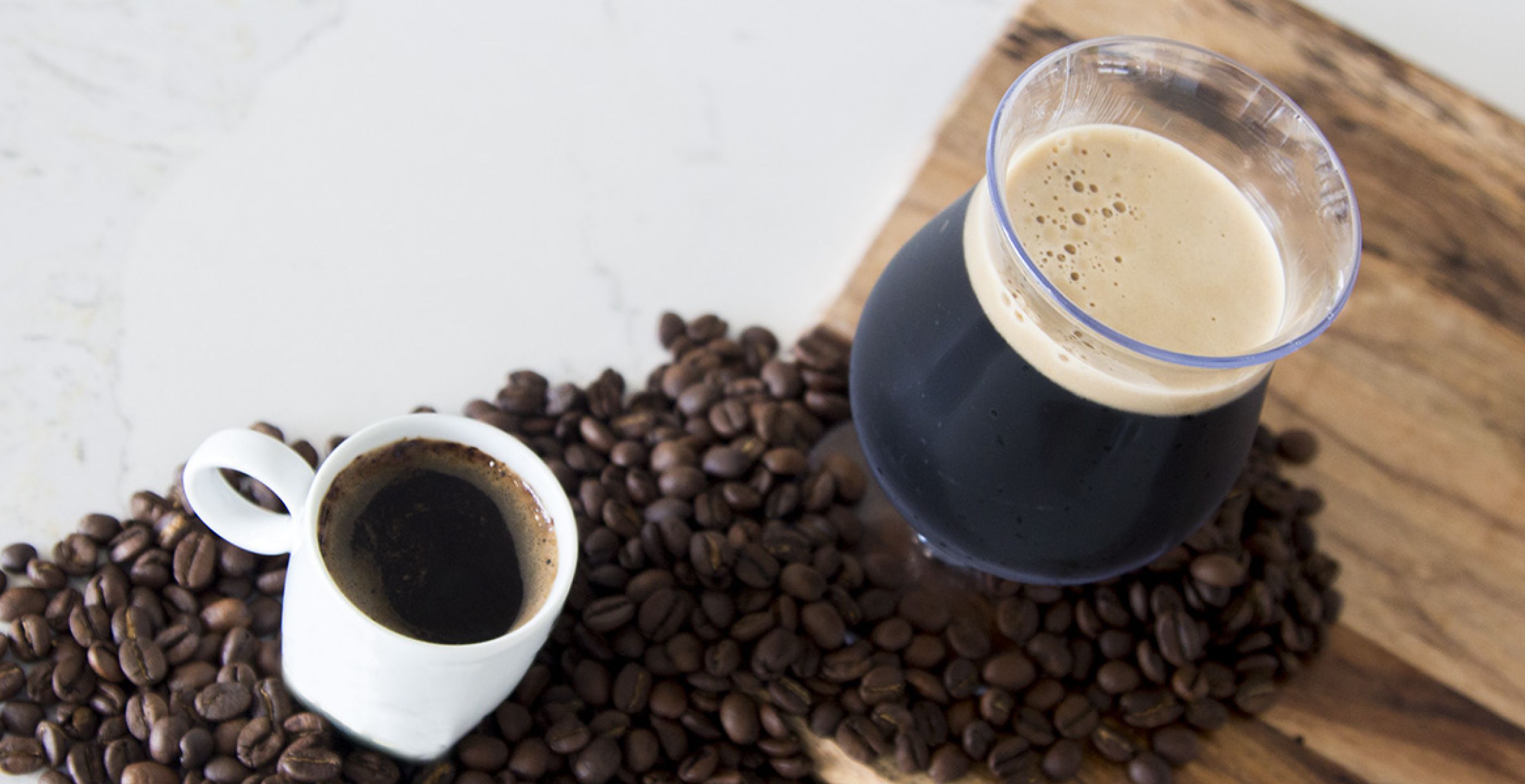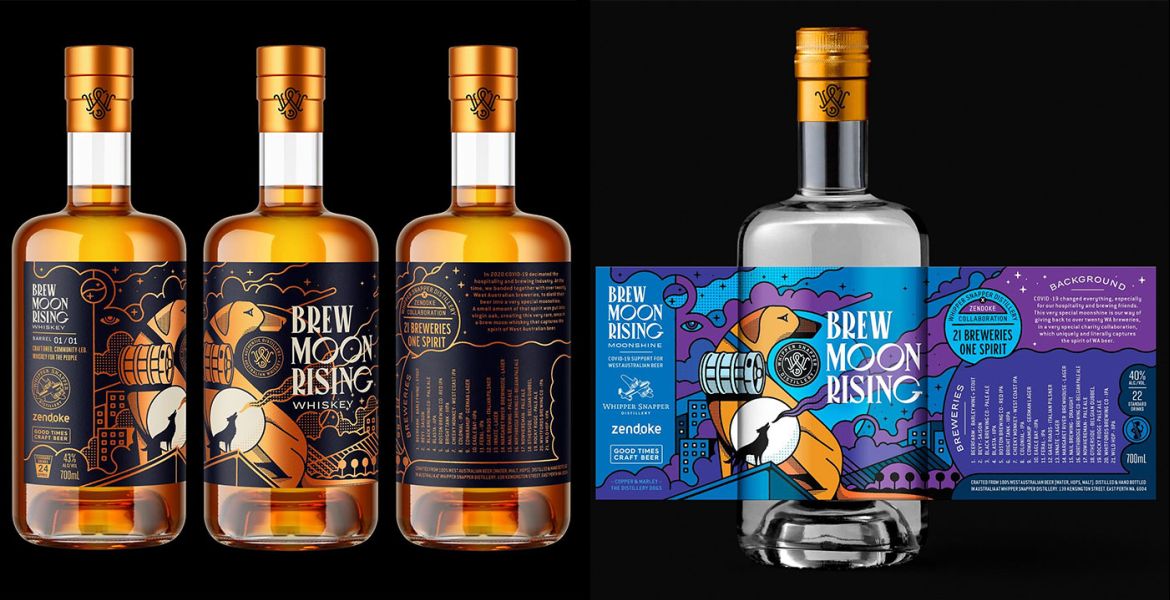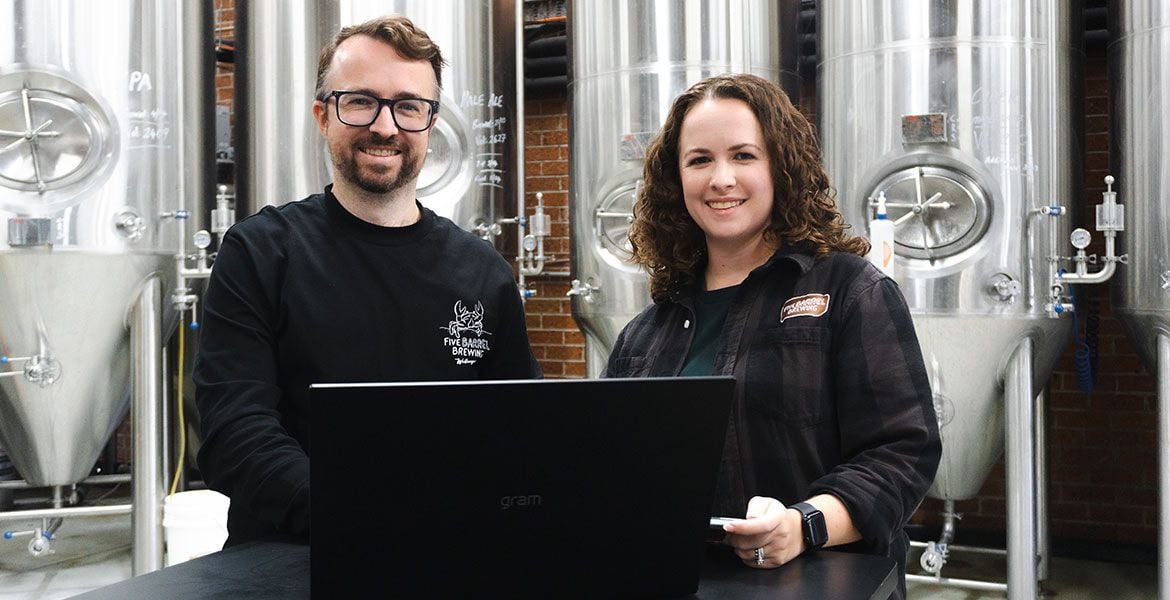The worlds of coffee and beer might initially seem like polar opposites. For starters, caffeine and alcohol have competing effects on the body, typically resulting in their consumption at opposite ends of the day. Yet an increasing number of breweries are rolling the two drinks into one by adding coffee to their beers, suggesting they may share common ground, after all.
In Australia, both coffee roasters and craft breweries share similar values. Often independently owned, they take pride in creating a product centred on quality, rather than quantity. Both have passionate followings that often intertwine, particularly in the case of early-rising brewers that crave a shot of caffeine to get going.
In the United States, the lines become even more blurred, with breweries like San Diego’s Modern Times selling cans of their cold brew on the same shelves as their beers, something WA's The Sophisticated Beast does on a tiny scale too.
At a more fundamental level, there are similarities with ingredients processing, too. Both products require a step of kilning or roasting. For coffee, that’s for the beans; for beer, the malt.
In fact, when malt is roasted dark enough, the flavours begin to mirror the bitter flavours and aromas of highly roasted coffee. This leads to the most natural and obvious combination: adding coffee to dark beers like stouts or porters, simply because they share similar characteristics. However, the flavour combinations can be much more complex than just dark and roasty, according to Will Young, founder of Sydney-based Campos Coffee.
“In coffee, there’s two main flavours you get from roasting the bean,” he says. “You get one which is the fruity and floral flavours, which is inherent in the coffee plant or varietal itself. Most skilled roasters can bring that out in the coffee.
"The second type of flavours you get are the sugar browning flavours, which range from dark chocolate through to toffee and caramel.”
As for the main influencer on the dominant flavour, it primarily depends on where in the world the coffee is grown.
“Each country has its own flavour profile, which is unique to that country and recognises the terroir of that country," Will says. "If all coffee tasted the same, it could just be grown in one country and we’d lose a lot about what makes the coffee interesting or unique.”
For a brewer, when it comes to choosing which particular bean variety to use, “most of the time, it starts with the beer,” says Andrew Meli, head brewer at Batch Brewing Company.
“You find characteristics in there that you want to complement and then find the coffee to do so, as you would with hops or any other ingredient.”
Batch is well experienced when it comes to making coffee beers, having collaborated with Marrickville neighbours Voodoo Coffee in the past, as well as Campos, with whom they’ve made two beers. The most recent is Campos Milk Stout, which uses Campos Superior Blend in an Elsie the Milk Stout variant. The more daring one, however, was for GABS 2017: a dark sour with blackcurrants and coffee named A Currant State of Infusion.

“The idea with that was that there were going to be a lot of similarities with the characters we were going get from blackcurrants in a dark sour beer that you would get with some varieties of coffee,” says Meli.
“We had already talked about doing a collaboration with Campos. We’re all coffee fiends here – as a brewer, you kind of have to be – so we approached them and asked them where we should start in order to get the characteristics we wanted. We worked out we wanted a single origin, Ethiopian variety, and then they roasted it to our specs.
“To savour the characteristics that were already there, we decided to roast it very lightly. The more you roast something, generally the more acidic and more bitter it becomes. However, some varieties – the Ethiopian being one of those – are naturally acidic and fruity anyway, so we didn’t want to roast it too much and destroy any of that and make it too bitter.”
Will describes it as "a really daring beer” adding: “Now, we have a good working relationship [with Batch] where we can help develop the blend for their beers and come up with some pretty good results.”
He suggests Batch, as well as many other craft brewers, share a range of similarities not just limited to the production process, but in terms of ethical sourcing of ingredients as well. While some craft breweries work closely with maltsters such as Voyager Craft Malt to foster a local economy, roasters like Campos are dedicated to improving the lives of people in the regions where their coffee is grown.
“We spend a lot of time every year out on the road in all of the producing countries working with the producers on the ground level, to make sure we’re getting the best coffee but also making sure payments are going straight through to the farmers,” Will says. “We really enjoy watching the effects that has on the community.
“We can also learn about what they’ve gone through during the year, learn about how this harvest is different to last year’s, and how that will affect our coffee blends.”
After the coffee has been sourced and roasted, it’s then up to the brewers to put it in to a beer. In order to do that, there are a few possible methods. The main two variables include the coffee itself, which can be ground or kept as whole beans, and the water temperature, either a hot- or cold-infusion.
For Meli and the team at Batch, the preferred method is “whole beans, straight in.”
“Literally, we treat it the same way we would with a dry-hop,” he says. “Initially, we did a whole bunch of small tests – took a growler of beer and steeped coffee beans in different ratios. The main reason is to try not to impart too much colour. It’s a really easy method and I think it gets better results – it allows the beans to have full contact with the beer.
"Then again, it’s hard to say how the flavours will translate in to the beer in the end, you kind of have to take a bit of a gamble as to how the characteristics will evolve. Now that we’ve worked out how to dose coffee well and get the results we want, its opened the door to a whole bunch of other ideas.”
The wider Australian beer world isn't one that's short of ideas and, when it comes to using coffee, plenty have looked beyond the traditional darker beers – and not just for off-kilter twists like Rocky Ridge's just-out Karl Joins The Mafia imperial white stout. The best part of a decade ago, one of Mountain Goat's earliest Rare Breeds was a Coffee IPA that looked to capture the more perfume like characteristics of coffee beans, while they've cropped up in complex sours like La Sirène's Seven Sirens collab with Seven Seeds too.
Lagers aren't off limits either: Shedshaker in Castlemaine have been brewing an Espresso Dark Lager since GABS 2016; Blackman's this month released Coffee Lager in collaboration with Geelong's Cartel Coffee, a beer that's as straightforward as its name suggests: a traditionally-minded pale lager shot through with, well, a shot of coffee.

For Wayward Brewing Company, who have also recently released a coffee beer in the form of their 2019 GABS creation Coffee & Donuts, the process is a little different.
“After we nailed down the exact coffee, we went through the levels of roast and the amount of time needed in cold-infusion,” says head brewer Shaun Blissett. “Once we decided that, we used our pilot system - 300 litre fermenters - to do cold brew using huge bags of ground coffee. It was run off into kegs so we could allocate it to every batch.”
In these cases, the argument for cold-infusion is that it avoids extracting certain compounds that can potentially give the beer harsh, astringent characteristics. Nic Sandery, founder of Molly Rose, offers a different opinion.
Last year, he produced his first sour citrus coffee ale, Sour Times, with McLaren Vale-based Dawn Patrol, using an Ethiopian variety.
“What I’ve been told is that, with a lighter roast, there are great aromatics that you can’t really get if you don’t extract them hot,” Nic says. “So, we added coffee we made using a Moccamaster straight in to the base beer. We played around with the amount, ranging from about five to 25 percent.
“I wanted the acidity of the beer and the acidity of the coffee to combine and accentuate each other. The Ethiopian showed some mandarin-like characters so, in the finished product, it was really hard to tell what was from the coffee, what was from the citrus, and what was from the sour beer.
“The best thing is, you’re going to get the flavour delivered in the final product that you know, because you’ve done the trials and seen how they interact. After a couple of weeks, the coffee integrates really nicely with the citrus and the acid and the sour beer. Something kind of magic happens.”
Since then, he’s also worked with Proud Mary to create several different variations on the beer, this time experimenting with Brazilian and Columbian varieties, both soon to be available to taste side-by-side at his newly-opened Collingwood brewery.

For Nic, the joy of adding coffee to beer isn’t just the resulting beverage itself, but the whole experience of working with the roasters.
“It lets me collaborate with great drink producers,” he says. “It’s a whole art form to choose the beans, roast them and then extract them in the best way you can to get an amazing flavour from it. It’s fascinating how they can modify their methods to extract different flavours and accentuate different parts of the flavour profile.
“Just as we make a product in beer, they’re making a product in coffee that people enjoy and, like us, they’ve got to use their skills and scientific knowledge to make it the best they can. When we collaborate, it gives us brewers access to another ingredient to play with, one that I think works really nicely in beer.”

















